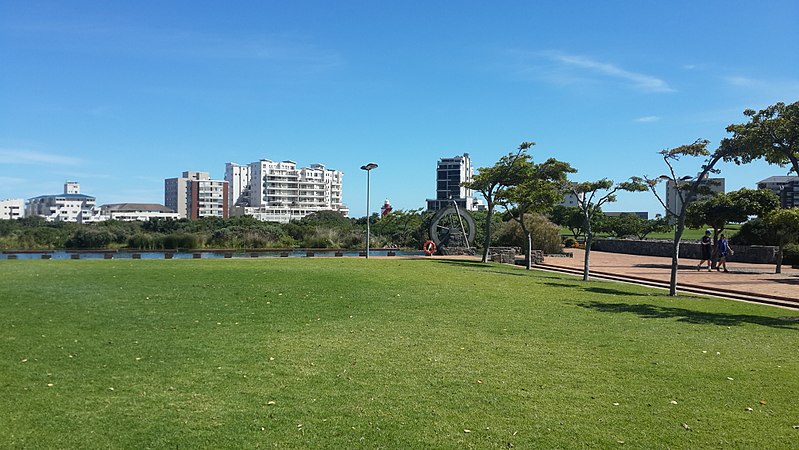Urban Biodiversity, in broader terms, is referred to the varieties of species living in an urban area. The presence of adequate biodiversity in an area depicts the health and productivity of its ecosystem. In the absence of biodiversity, an area is usually depicted as unhealthy and lack several basic necessities. The human-induced environment makes biodiversity difficult to thrive and flourish.

The Cities are entirely dependent on the natural resources and the biodiversity for fulfilling its need for essential goods and services. With the absence of biodiversity, the growth and wellbeing of a city are affected. A healthy ecosystem and organic range are essential for our cities to function correctly. Hence, saving and conserving our local biodiversity is of utmost importance. It ensures proper wellbeing, sustainable development, and global development of the cities and in turn, the country. The population of a city is far denser as compared to that of a rural area hence is more important to conserve the urban biodiversity.
Urban Biodiversity in Delhi
The Delhi ridge forests are considered the lungs of the capital, acting as a natural green belt covering the city. The Delhi ridge was once crammed with only the ‘keekar’ (Acacia acaru) number of trees. With the advent of the British, several neems (Azadirachta indica) and babul (Vachellia nilotica) trees were planted in the Delhi ridge area. Over the years, the pressure on the Delhi ridge is increasing at an alarming rate. The growing pace of urbanization in the city, a heap of new constructions and developments has put in tremendous pressure on the ridge area.
Why we are focussing on Urban Biodiversity
Urban Biodiversity, as the term suggests, is the biodiversity of the urban areas. Today, urban areas in India are faced with excessive population rates. The growing pressure of unplanned economic development, industrialization, and vehicular emissions is also putting additional pressure on the environment. This has led to a considerable rise in urban pollution, affecting air, water, and land. Air pollution has increased rapidly in many cities and has also reached to our rural areas. It is especially due to vehicular traffic and industrial emissions. The rising population and the urbanization rate to meet the demands of the growing population has led to a decrease in open spaces and green belts in the cities. The human-induced activities directly interfere with the cycle of nature. The growing rate of deforestation, clearing up of open spaces are to name a few.
Also Read: COVID-19 – A Nature’s Self-Healing Mechanism
The City Biodiversity Index
The City Biodiversity Index (often known as the Singapore Index) is a biodiversity measuring tool of the city. It helps to evaluate and monitor the progress of the advancements made in the field of biodiversity conservation. It also keeps track on the biodiversity data of the city. The Index works on a scoring system, and the maximum a city can score in this index is 92 points The core components of the index are:
- Native biodiversity in the city,
- Ecosystem services,
- Governance and management of biodiversity.
With their subcomponents as:
- The proportion of protected natural areas,
- Regulation of quantity of water,
- The budget allocated to biodiversity
Each indicator can score a maximum of four points
Factors of Urban Biodiversity
- Urban Biodiversity should cater to the multiple components of bird diversity and their populations. It is not only limited to the small creatures like ants, pet dogs, cats, lizards etc nor to our terrace garden or our backyard organic farming. Urban biodiversity includes all the vegetation, faunal and avian species living together within close proximity of human beings.
- Today, there is an urgent need for increased biodiversity conservation. The focus should also be on developing better management strategies. The municipal corporations, environmental NGOs, eco clubs should come forward.
- The proper master plan of any new or renovating construction work could be of utmost help. It should be included with adequate consideration given to the presence of biodiversity. It should ensure that the project is in accordance with the guidelines issued by Govt. Of India regarding the inclusion of biodiversity aspect.
- Various urban patches should be made across the urban areas serving as the core buffer zones or nesting places for the birds. These urban patches would serve as nesting sites for birds that are displaced from their habitat due to urbanization.
- Several tree plantations programmes including urban afforestation, awareness drives, campaigns, etc should be organized at regular intervals to motivate and generate awareness among the locals towards the importance of urban biodiversity.
- The introduction of the concept of developing urban green belts in our cities is one of the fruitful measures for enhancing the urban biodiversity in our cities. Urban green belts are considered the lungs of the cities as they act as a sink for some of the harmful gases released by vehicles and industries operating in the city area.
- The main carriers of urban biodiversity in urban areas are the biodiversity parks, recreational parks, zoos, gardens and several green patches developed in the city. Efforts should be made to protect these and should be properly maintained and taken care of.
- It is also important to include the need of the landscape cover planning that respect local environmental characteristics, such as ecological corridors, natural habitat loss reduction and preventing the inadequate risk areas occupancy.
Also Read: Earth Day 2020, History

She is a Conservation Biologist deeply concerned with the protection and sustainability of natural resources and wildlife. She is particularly interested in studying and addressing the loss of Biodiversity and educating the people about the same. She has a Master’s degree in Zoology with Post Graduate Diploma in Environment and Sustainable Development and another in Sustainability Sciences.
